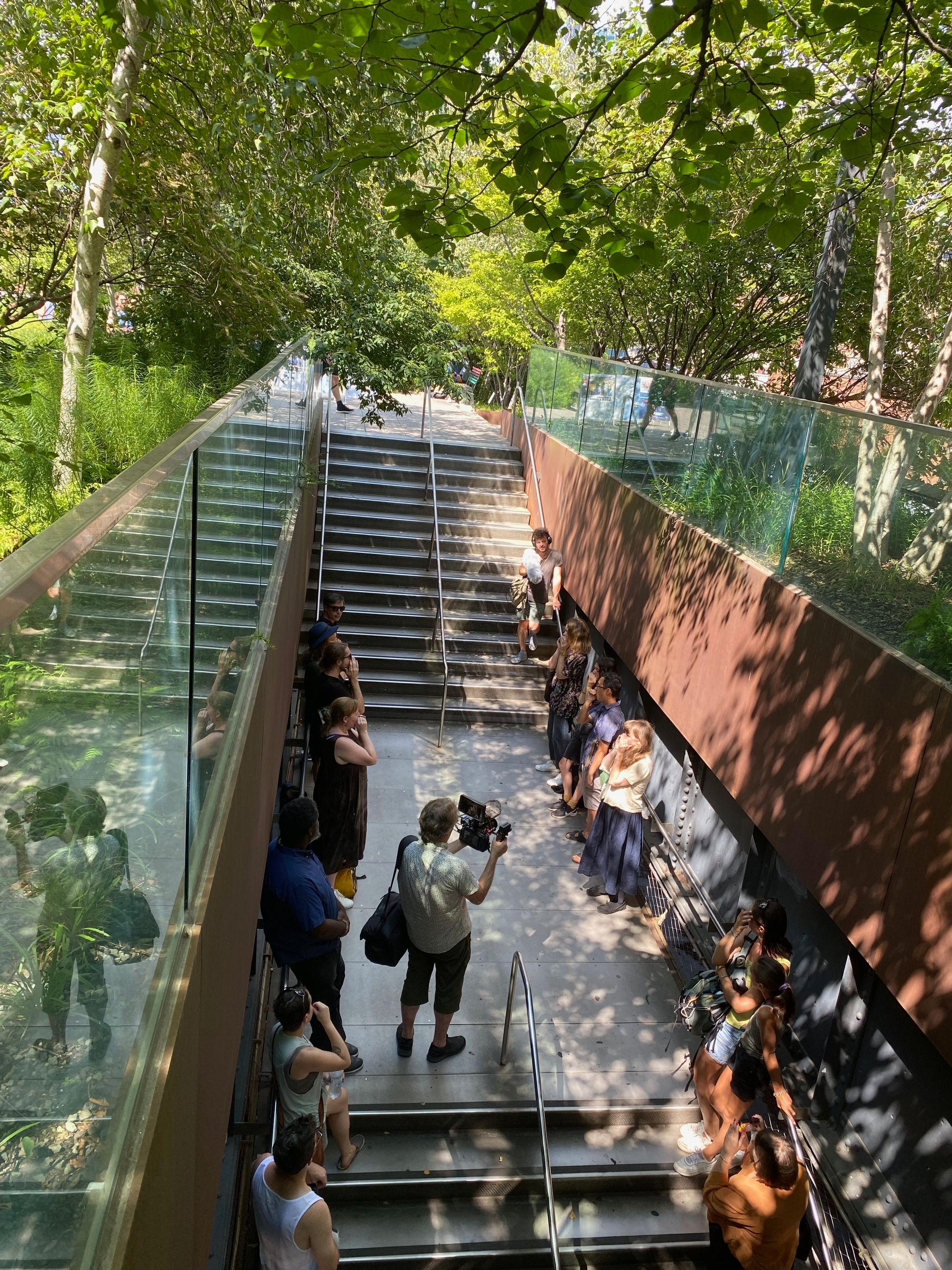Infusing the area around the Whitney Museum with a sense of joy and play is no small task given the foot traffic and over-saturation of visual and aural stimuli. But with weather balloons and various tools in hand, NYC-based music collective Qubit was up for the challenge. On August 20, the music collective led an afternoon that was co-created by composers Carolyn Chen and Qubit’s co-founder and Artistic Director Alec Hall featuring a myriad of wonder-inducing pieces by Chen and Laura Steenberge.
Steenberge’s Piriforms (2010), an installation-like work for eight vocalists who were stationed in a stairwell that led from the High Line down to the Whitney, opened the experience in a subtle and thoughtful way. The vocalists held simple and beautiful sustained tones, creating an intimate experience in a bustling location. Being positioned in a busy walking area, there was an innately immersive element to the piece. Some people walked through with a little hesitation, as if worried they were interrupting, others wanted to stand nearby and enjoy the experience rather than move through it. To hear the various parts with clarity, you had to be pretty close. The work was originally composed for 4 voices and the instrumentation was doubled in this context to produce more sound.

The next piece, the world-premiere of Chen’s Questions for Heathcliff (2022), moved into a grand world of spectacle. The piece is for two semaphore flaggers, each of which had their own character, and translating ensemble. Flagger James Ilgenfritz was “Heathcliff” and Matilda Sakamoto played the role of “Therapist”. Ilgenfritz was akin to a chaos creator, cuing shrill and wild responses from the ensemble. Sakamoto’s gestures, on the other hand, resulted in sweeter more straightforward tones. With Sakamoto positioned on the High Line and Ilgenfritz stationed on top of a car donned with weather balloons outside of La Pecora Bianca in a metallic jacket and race flags in tote, the event got the attention of bystanders. And people around quickly picked up on the premise of the piece – I overheard someone telling a child, “These people are playing what she’s flagging.” Another looked to their friend asking, “Should we get some instruments and join in?”

There was clearly a correlation between the flagging motions and what the ensemble played – I noticed that motioning to left versus right signaled a different subsect of instruments. Not knowing the title or any information about the piece during the performance, I felt that the movements had meaning but didn’t understand the context of Heathcliff and Therapist or the literal content of their dialogue until looking at the score afterwards. While I found the mystery gripping, being someone who is fascinated by the different ways that language can “translate” into sound I’d love to also experience the piece with the role of the optional scribe(s). The performance space, role of the scribe(s), generated musical material and length (the piece is anywhere between 10 minutes and “one therapeutic hour”) all impact this piece so much and open up a multitude of possibilities. I hope that it’s performed a ton so that we can experience it in its various guises.

You don't have access to this post at the moment, but if you upgrade your account you'll be able to see the whole thing, as well as all the other posts in the archive! Subscribing only takes a few seconds and will give you immediate access.

Access all our content
Subscribe now and have access to all our stories, help us stay independent and enjoy exclusive content, with constant updates.

